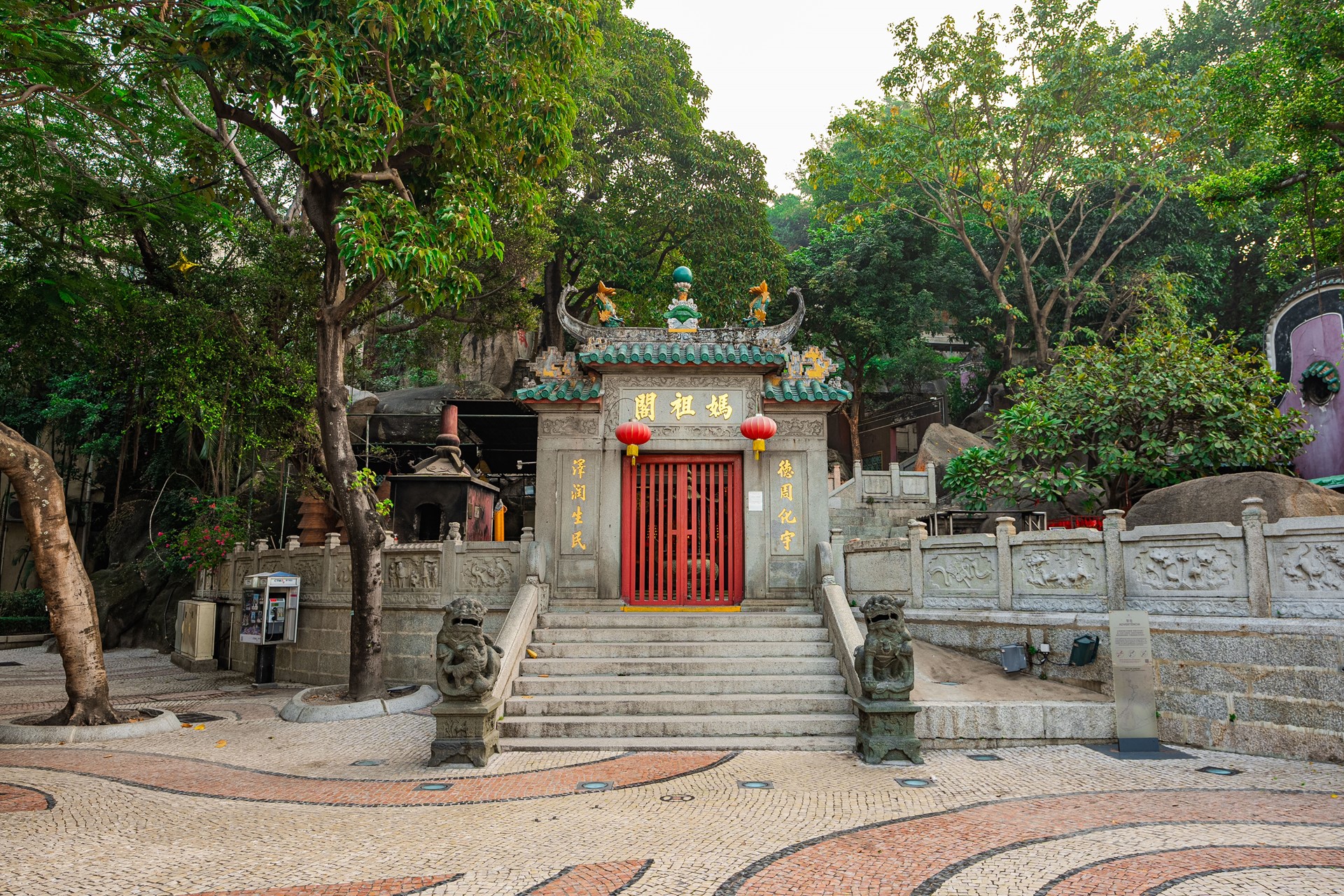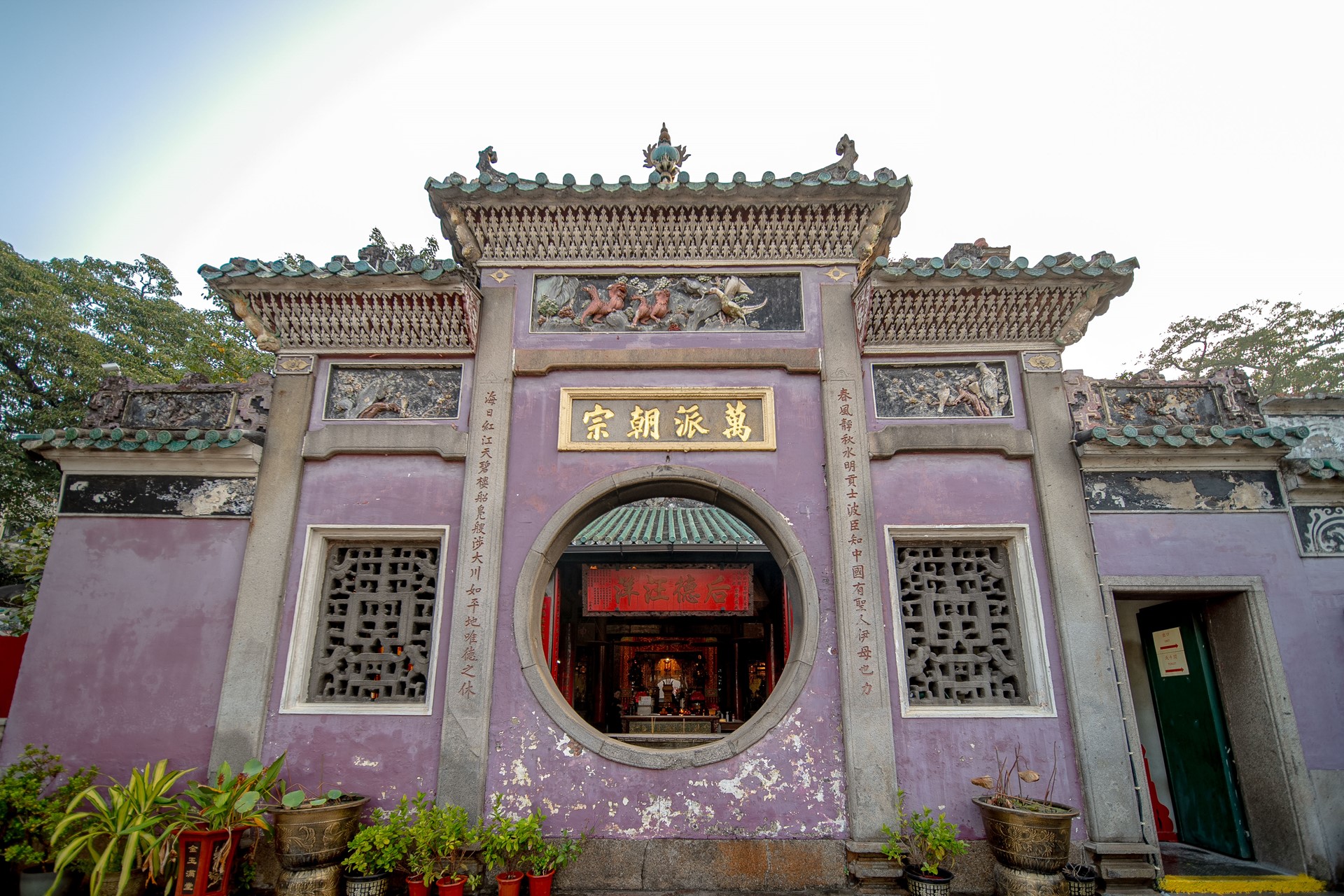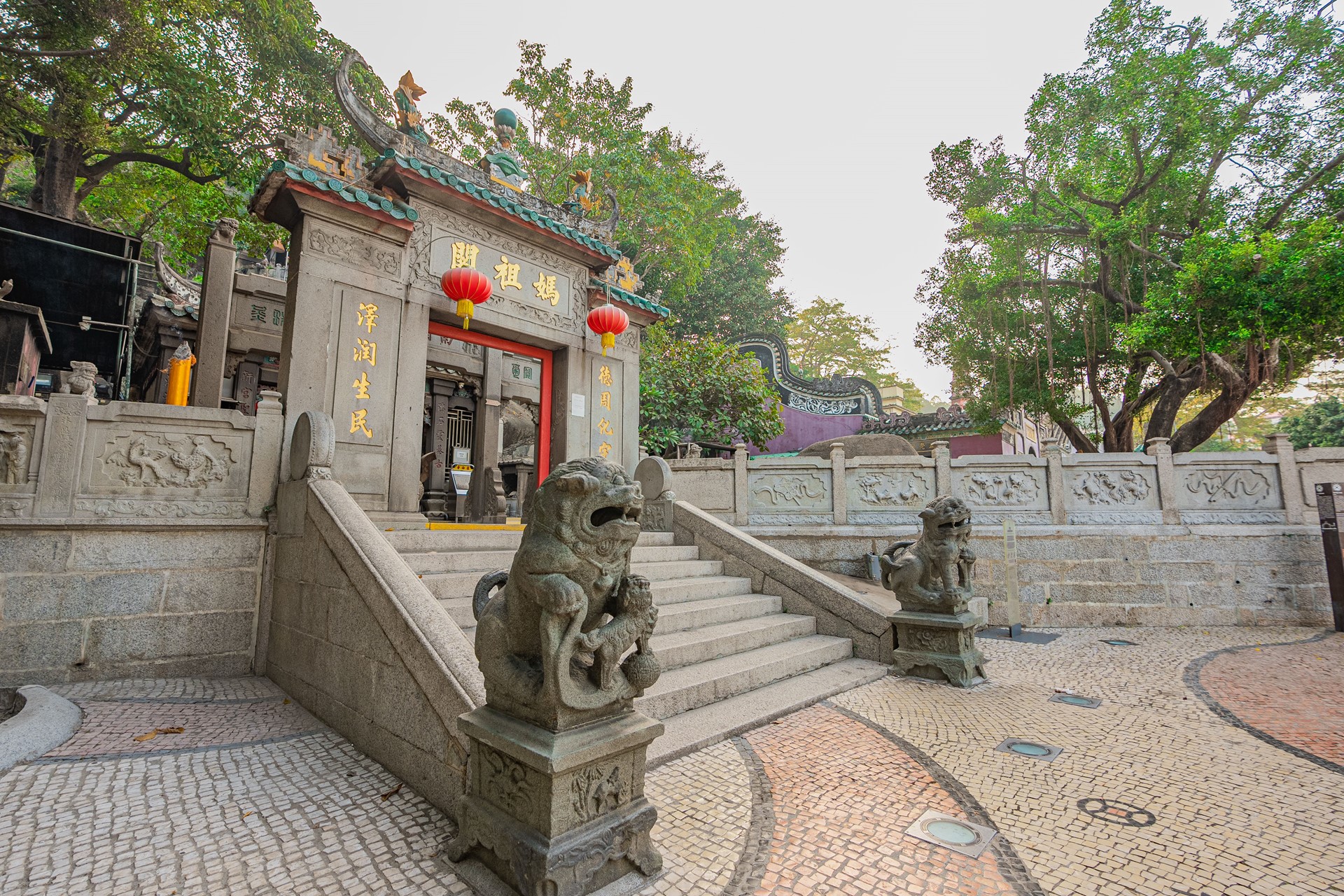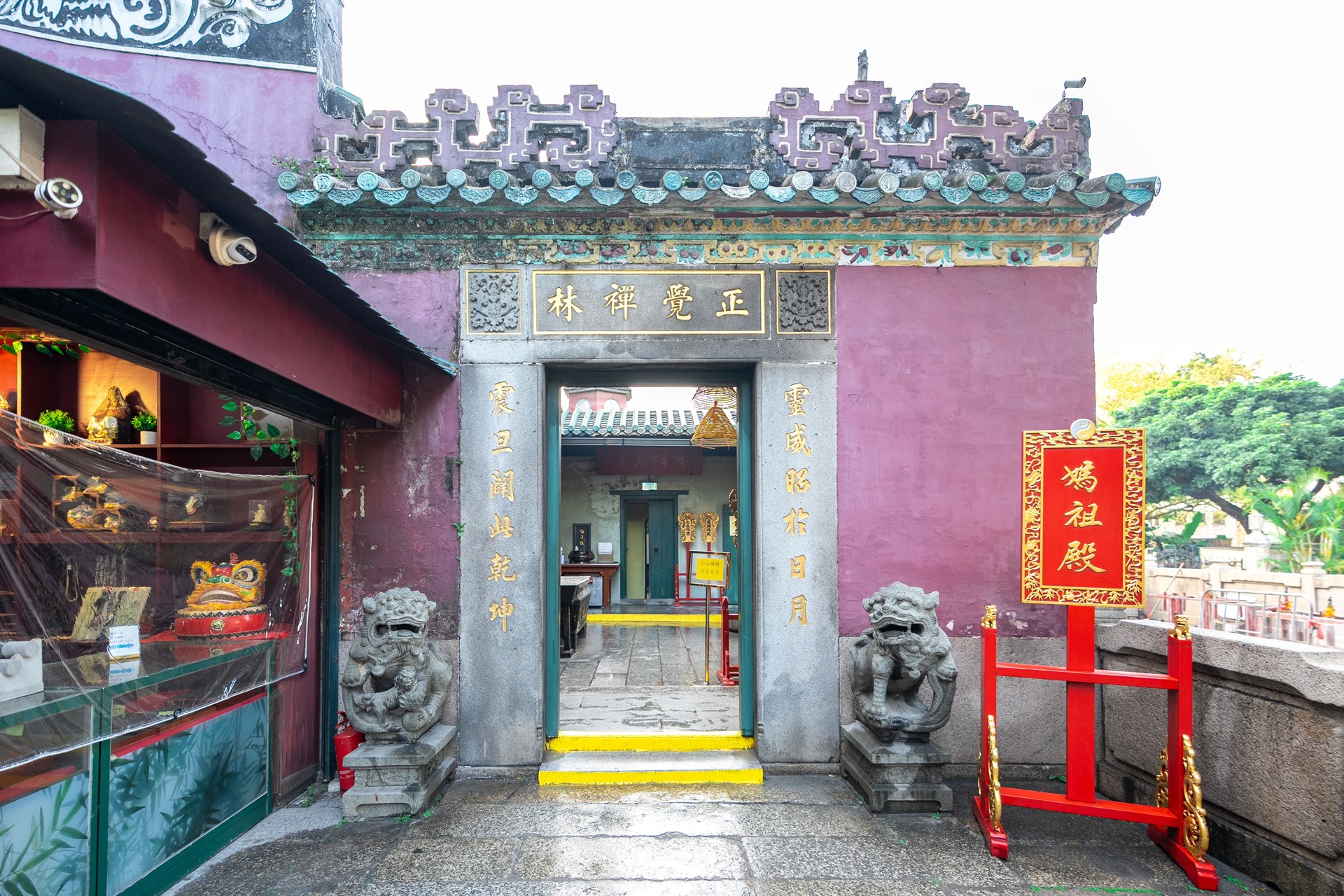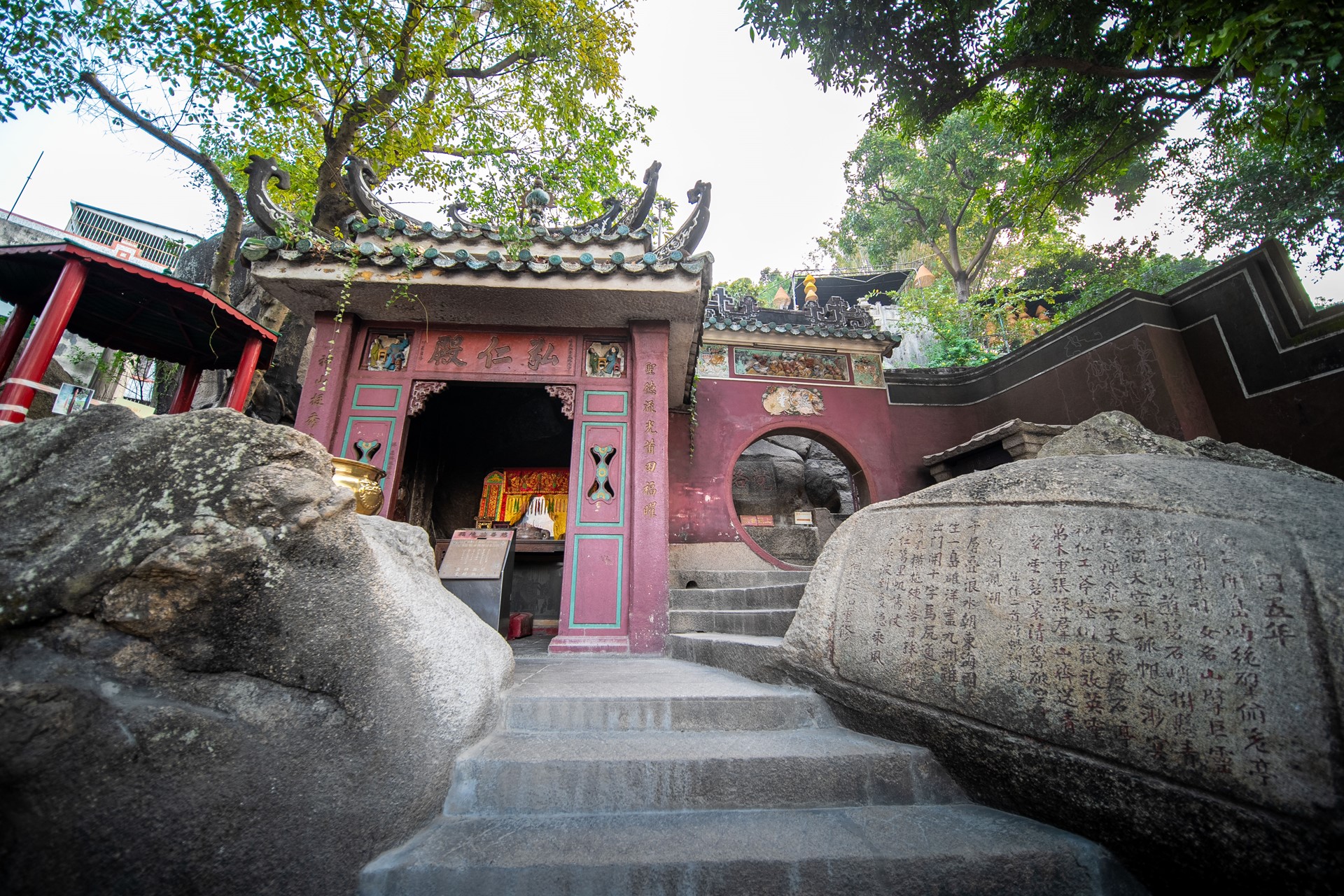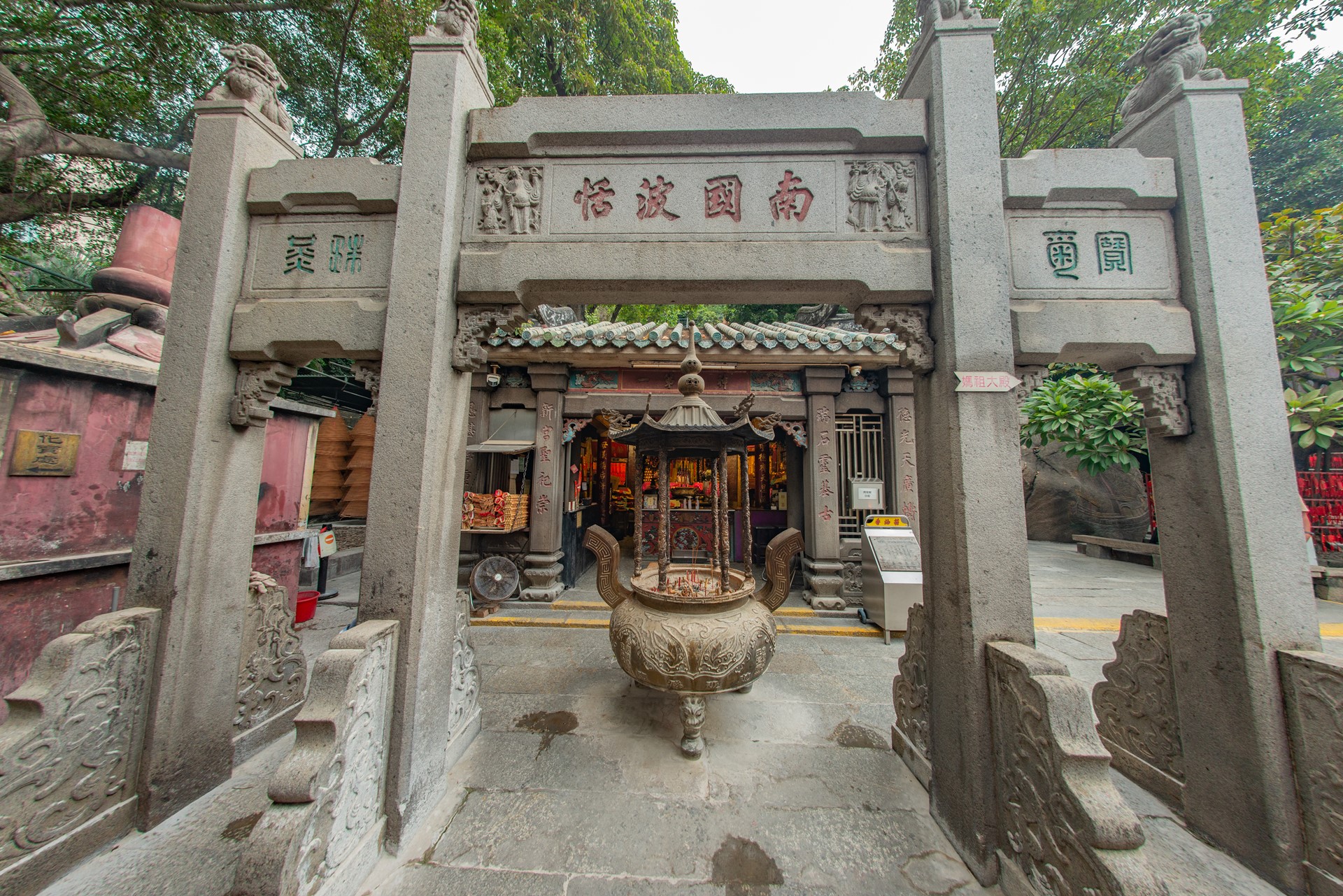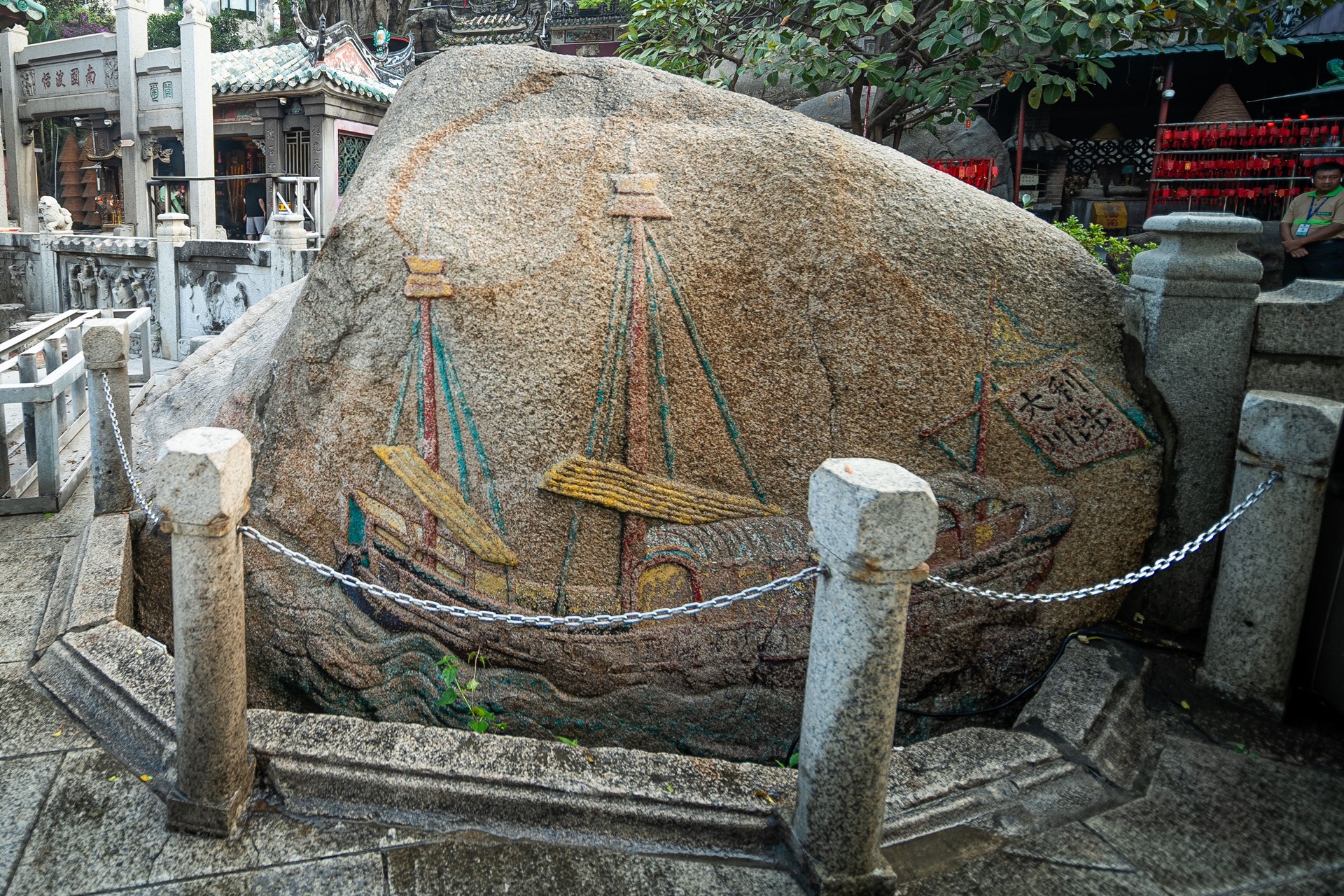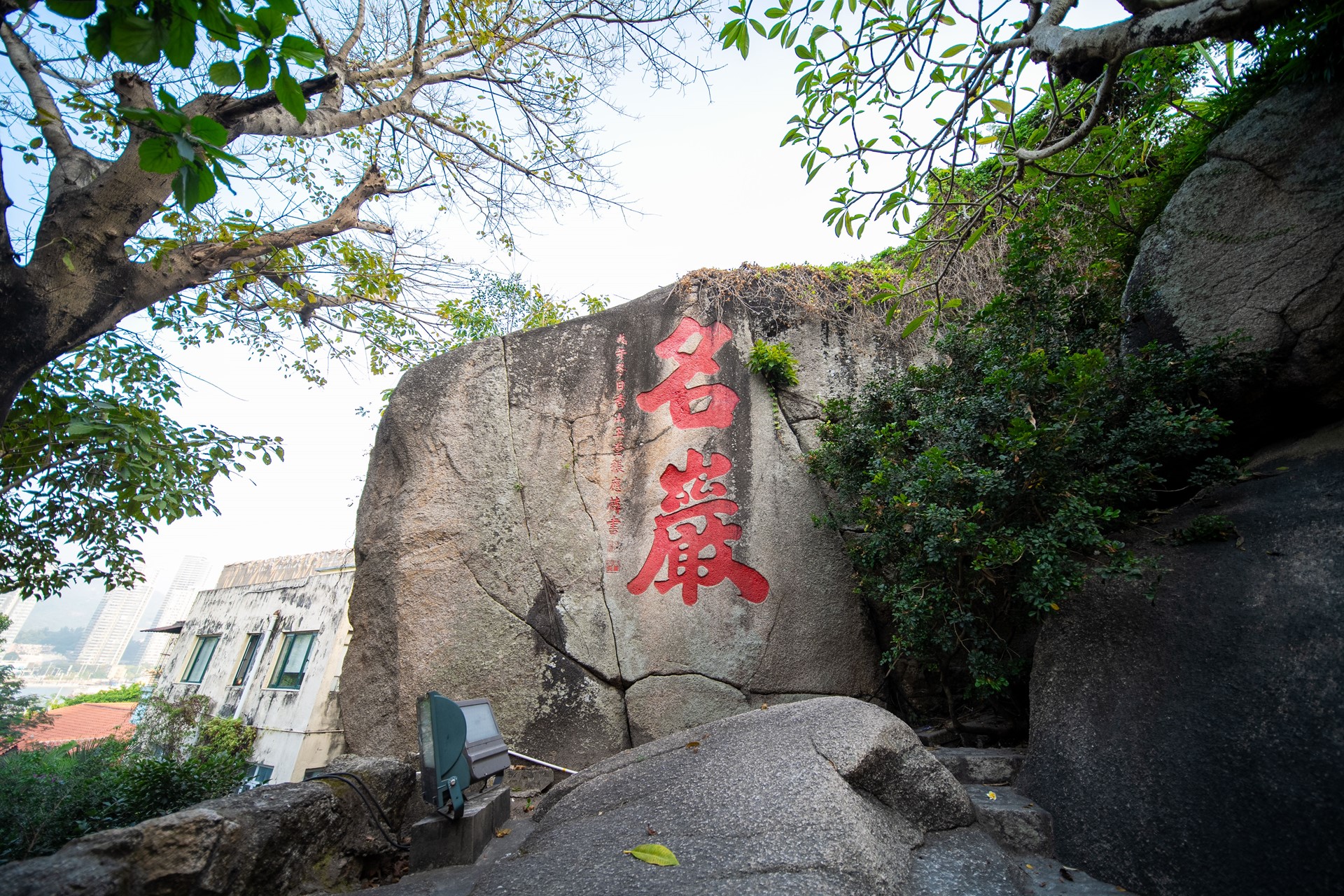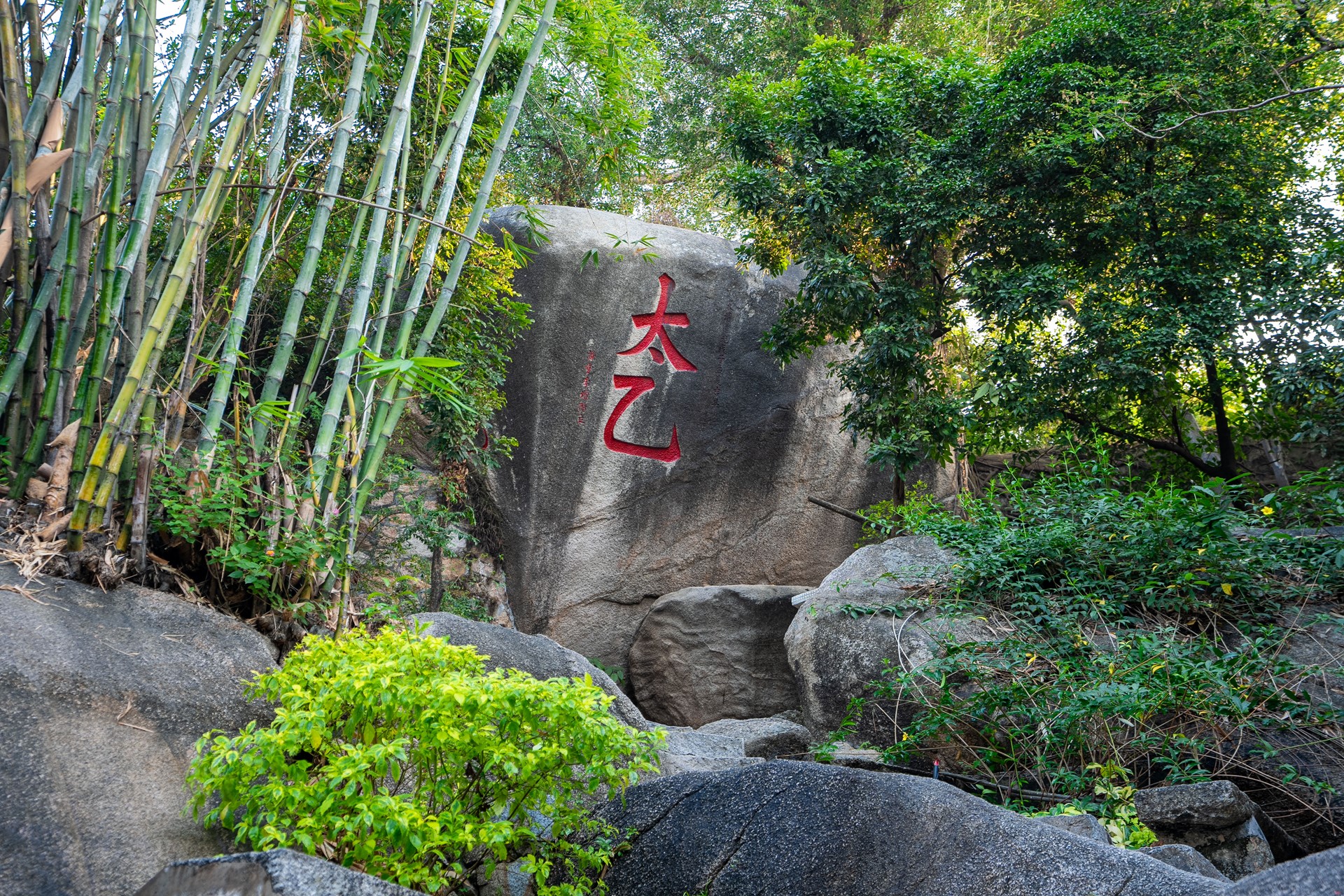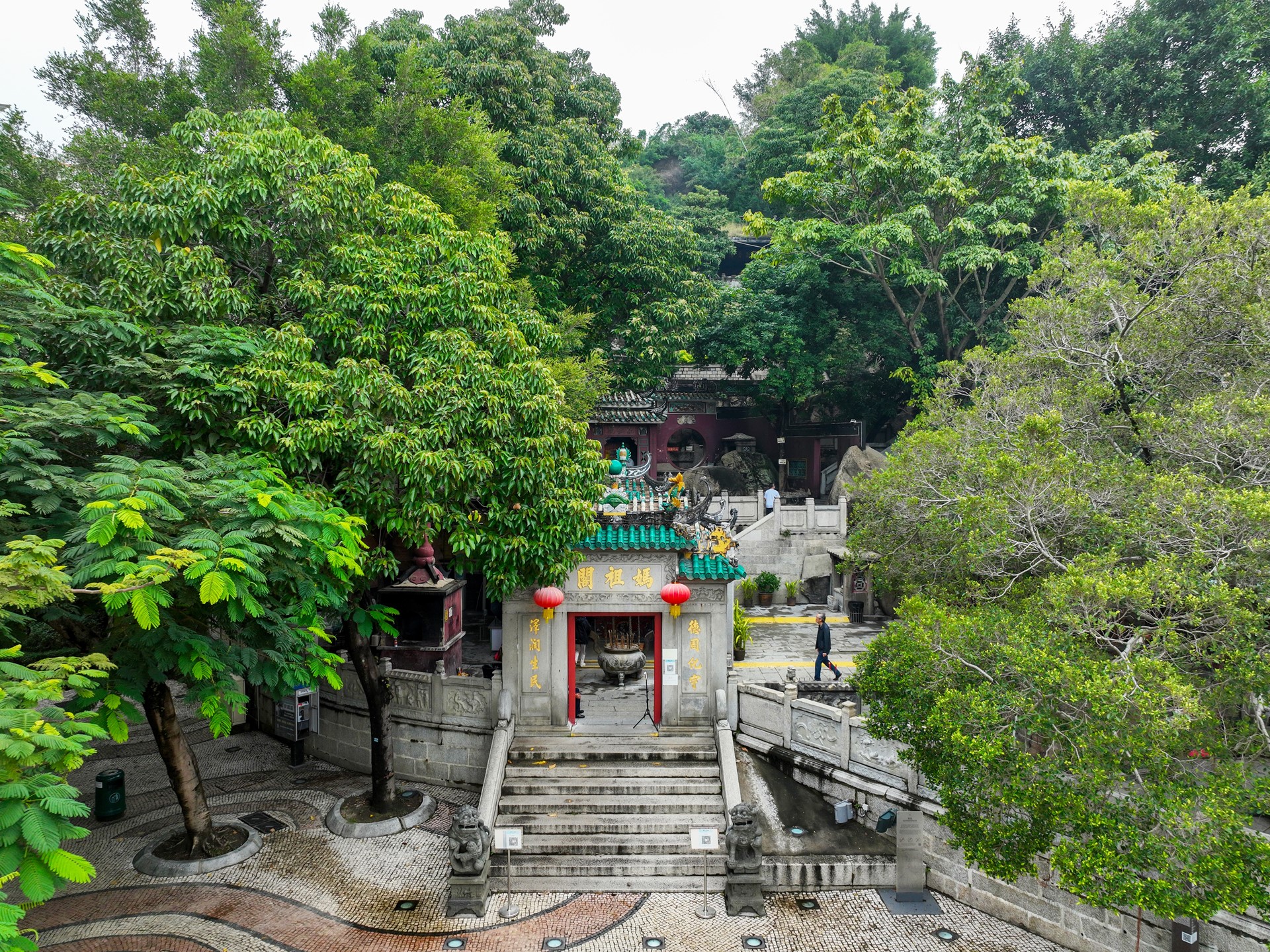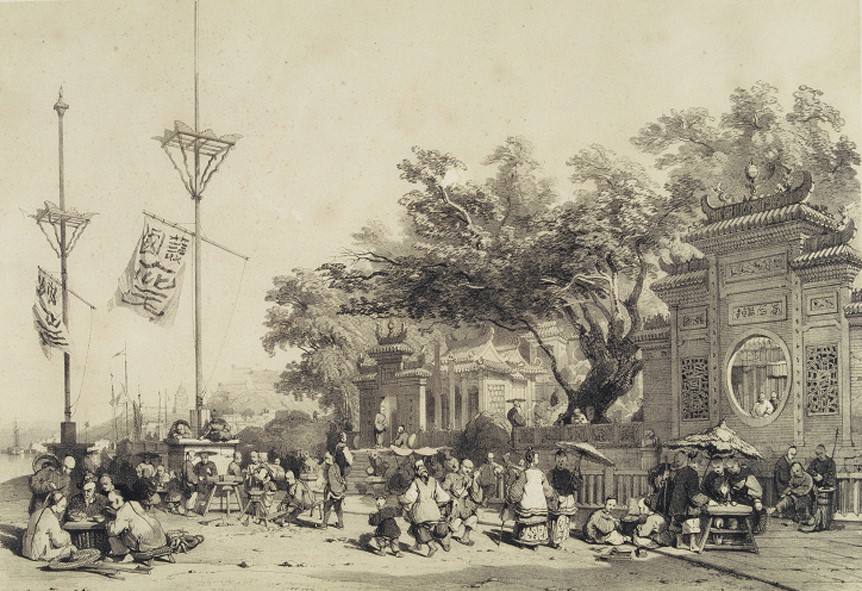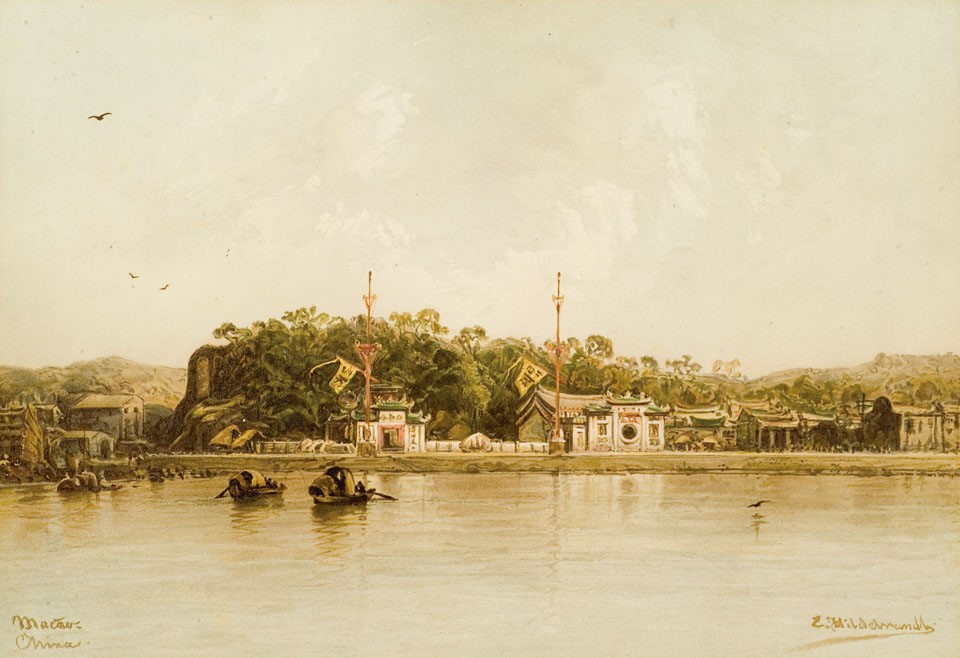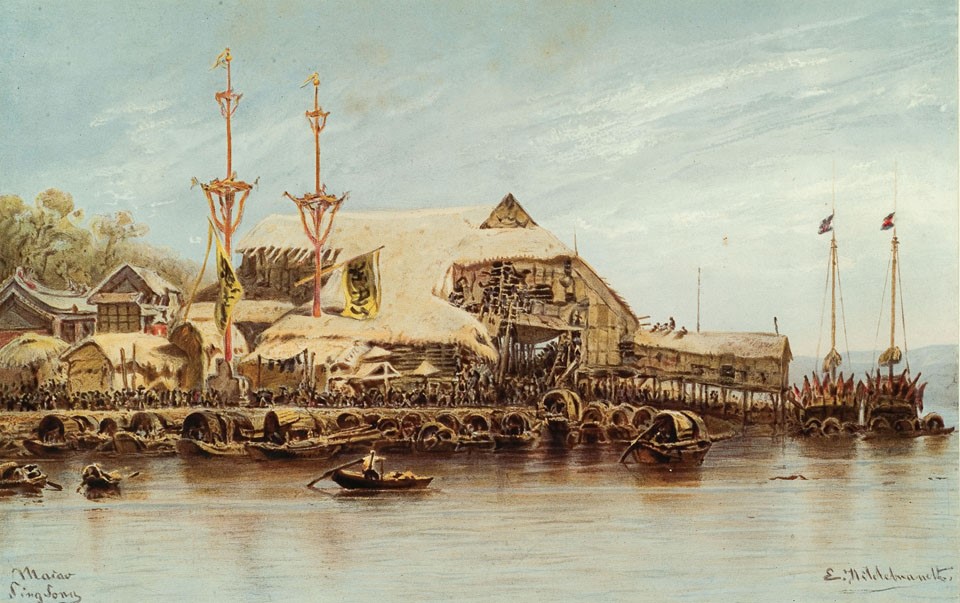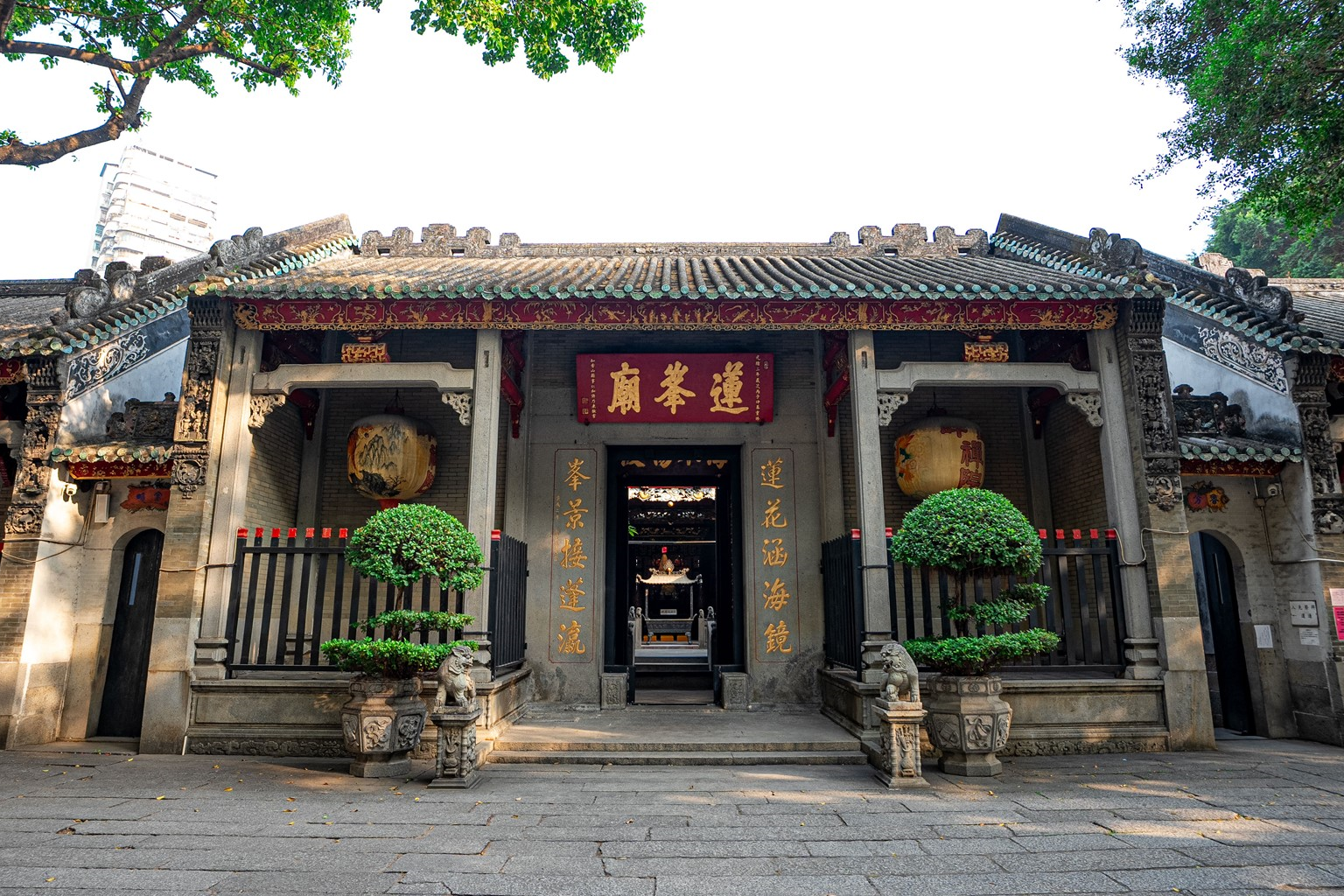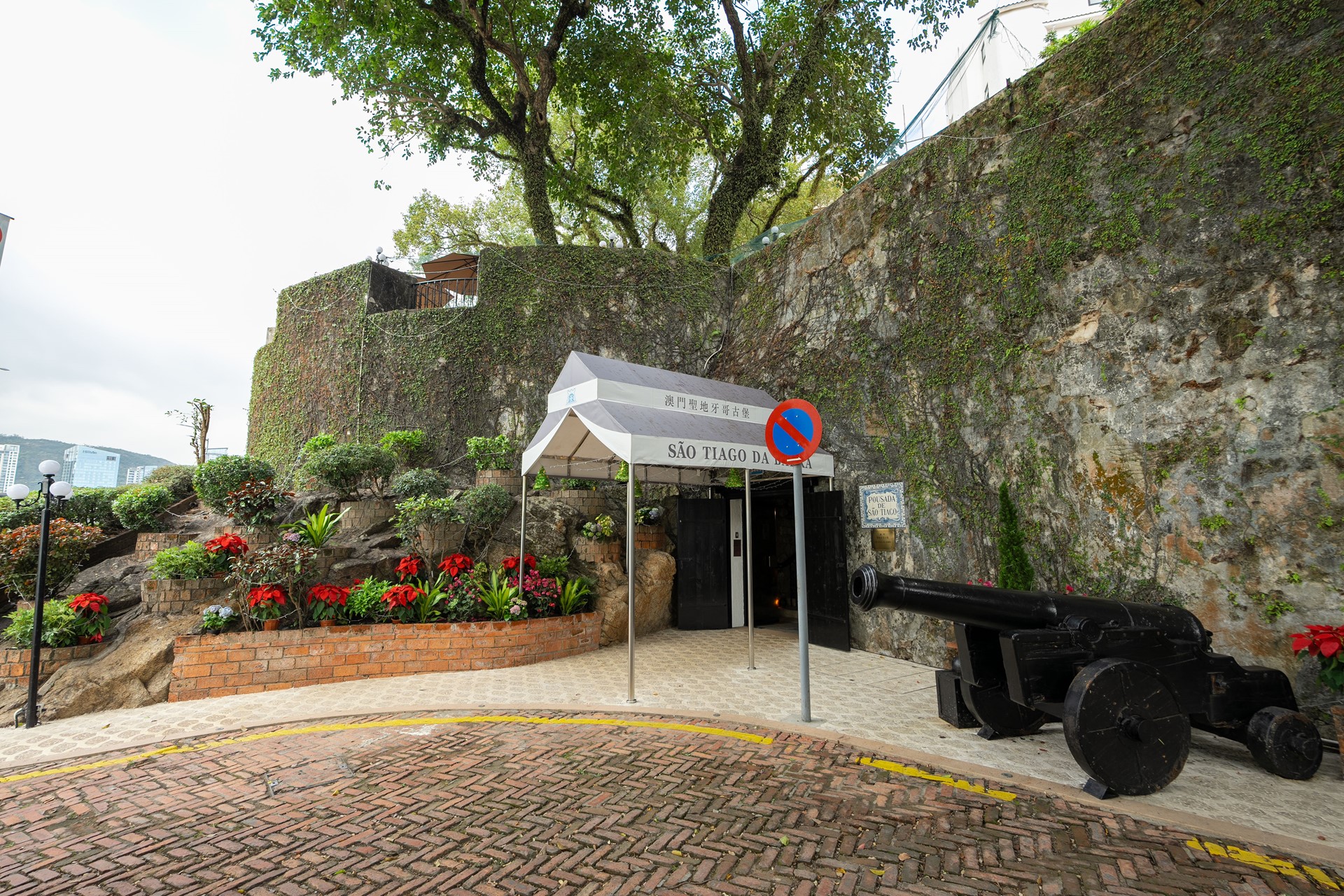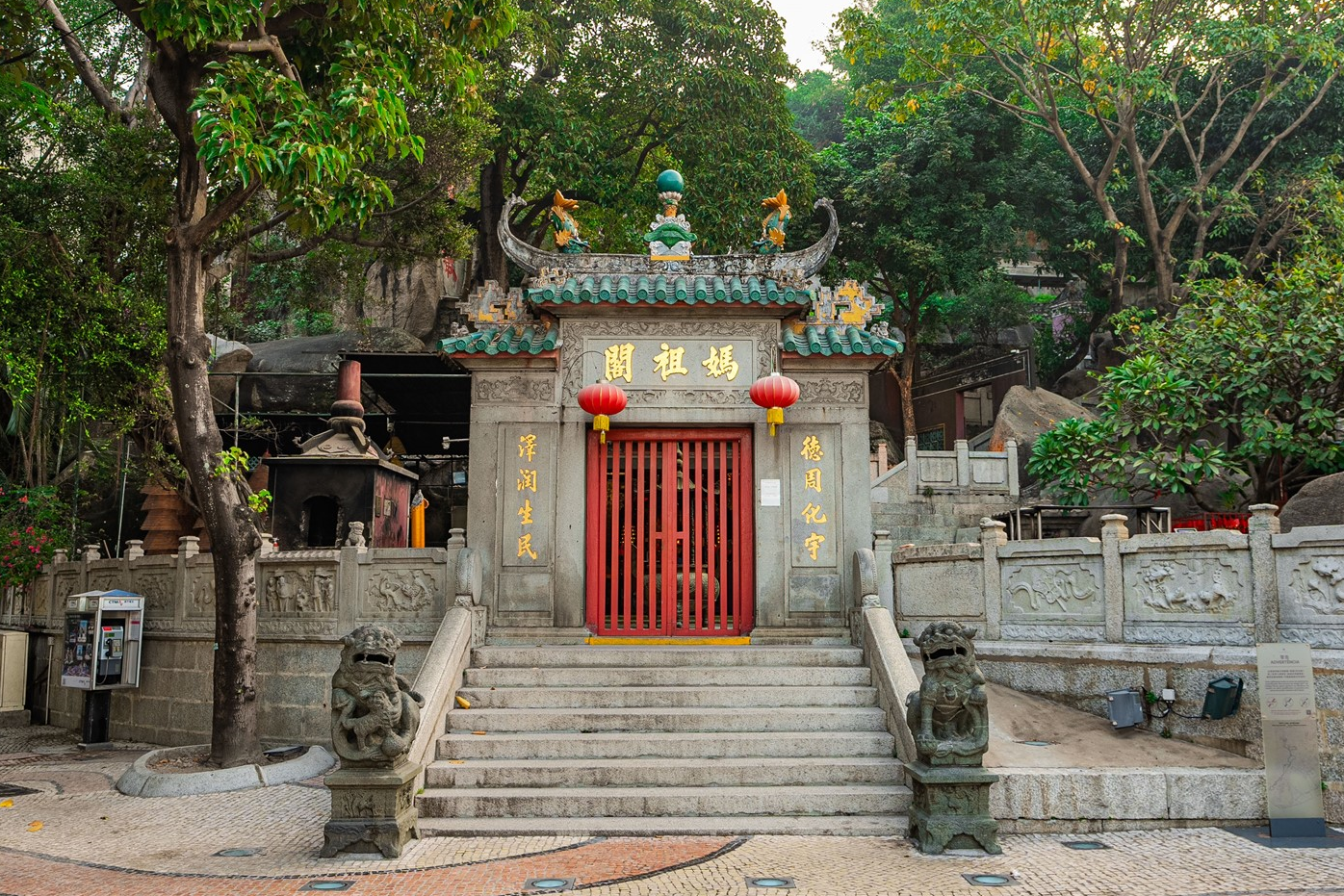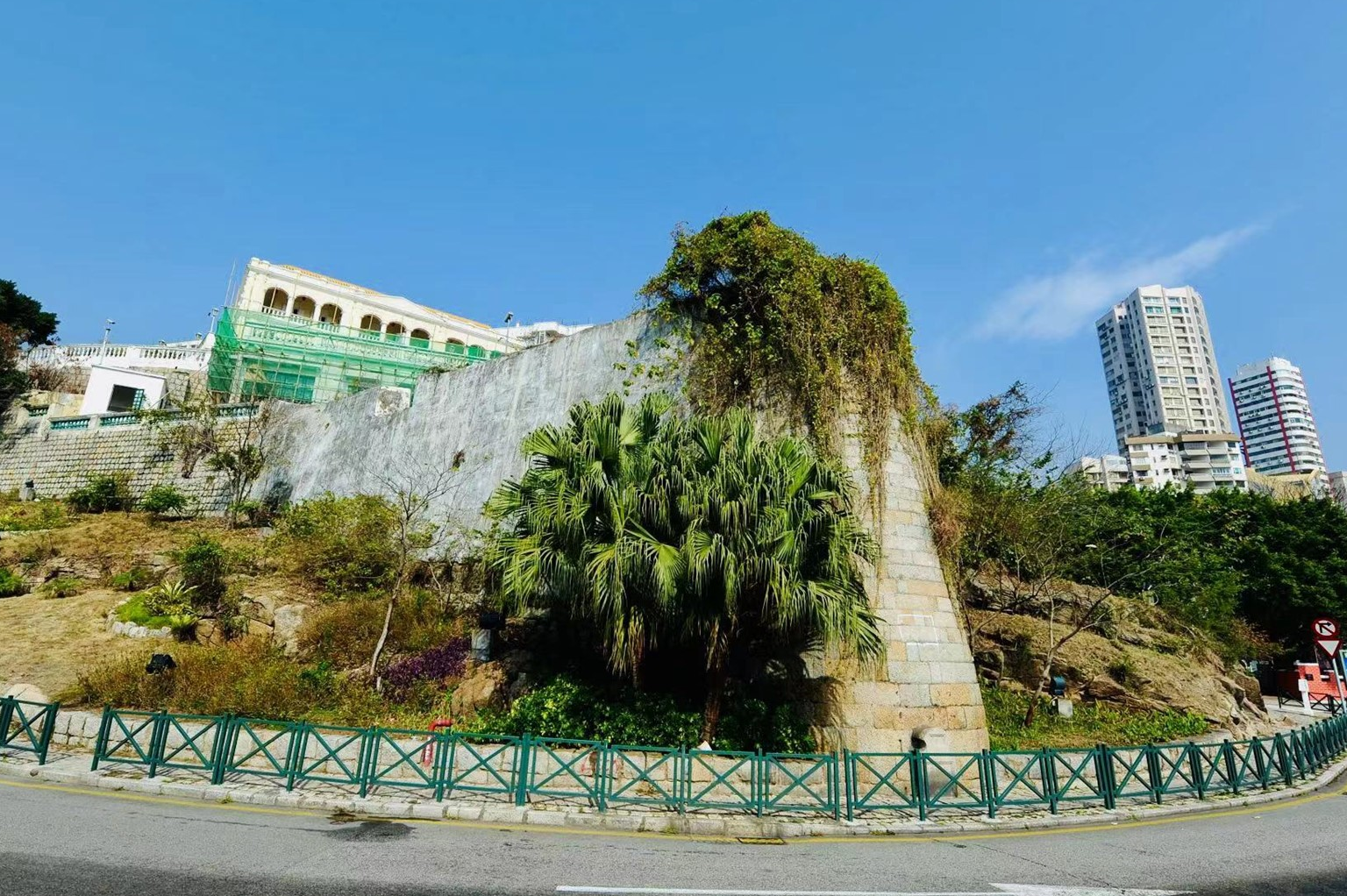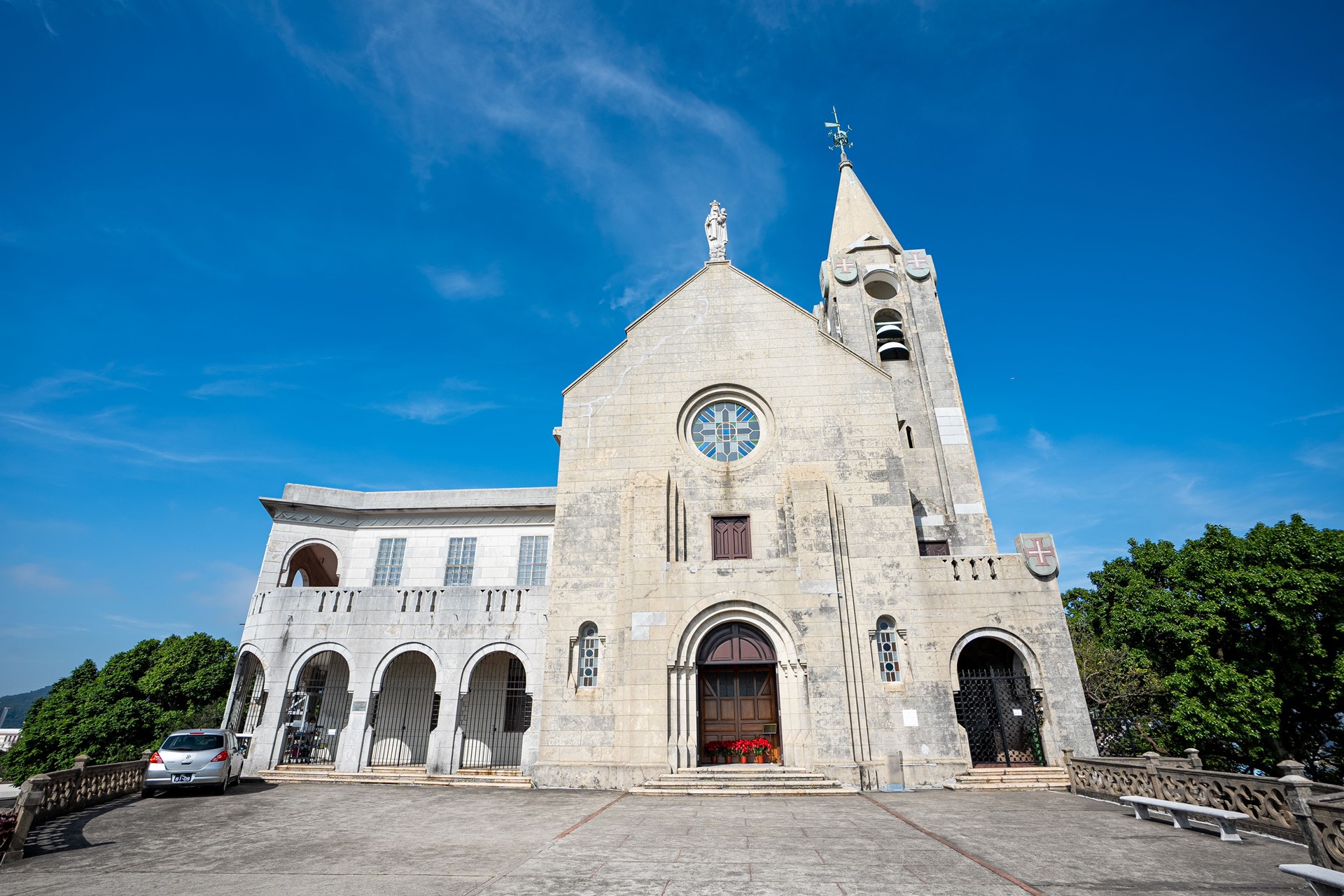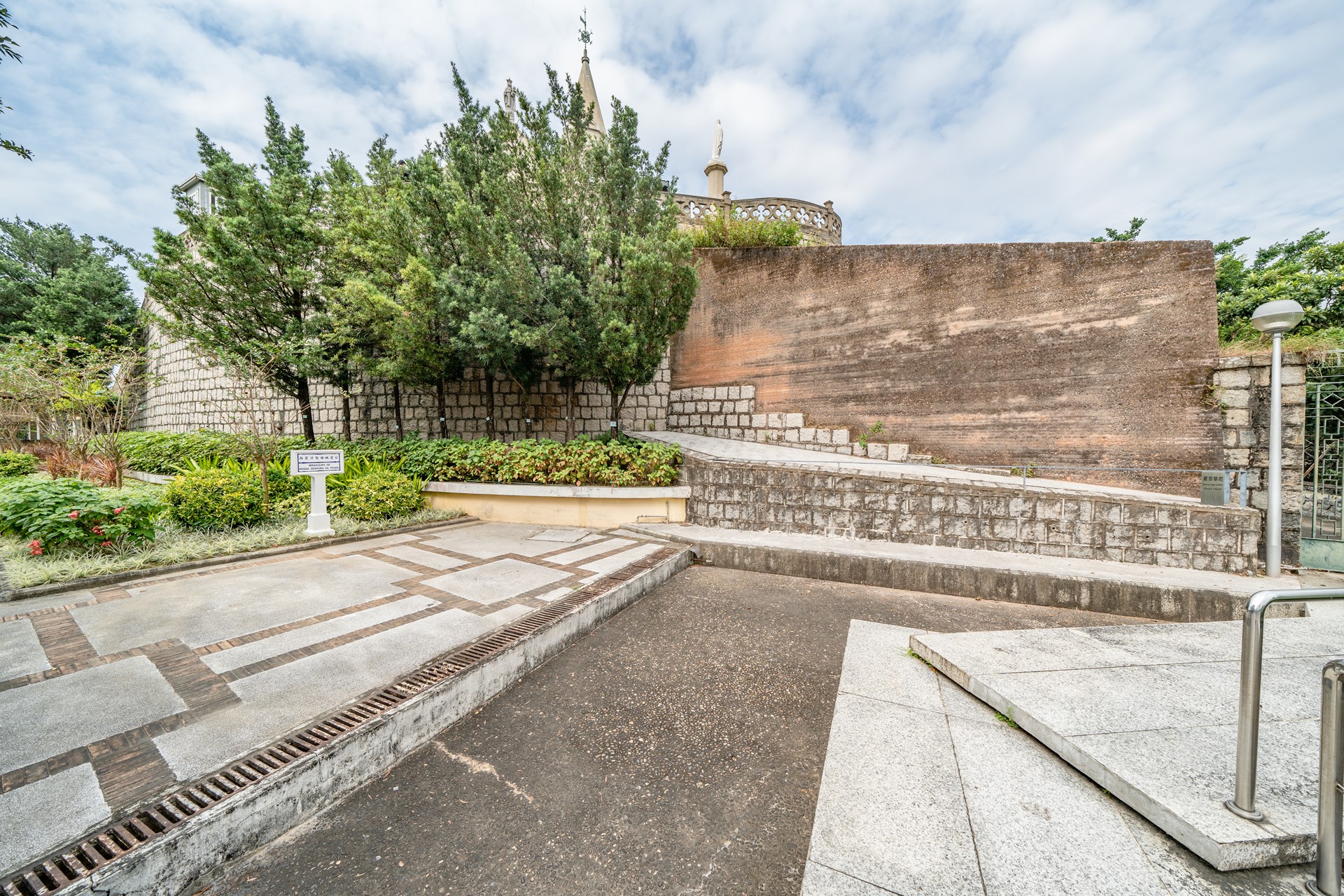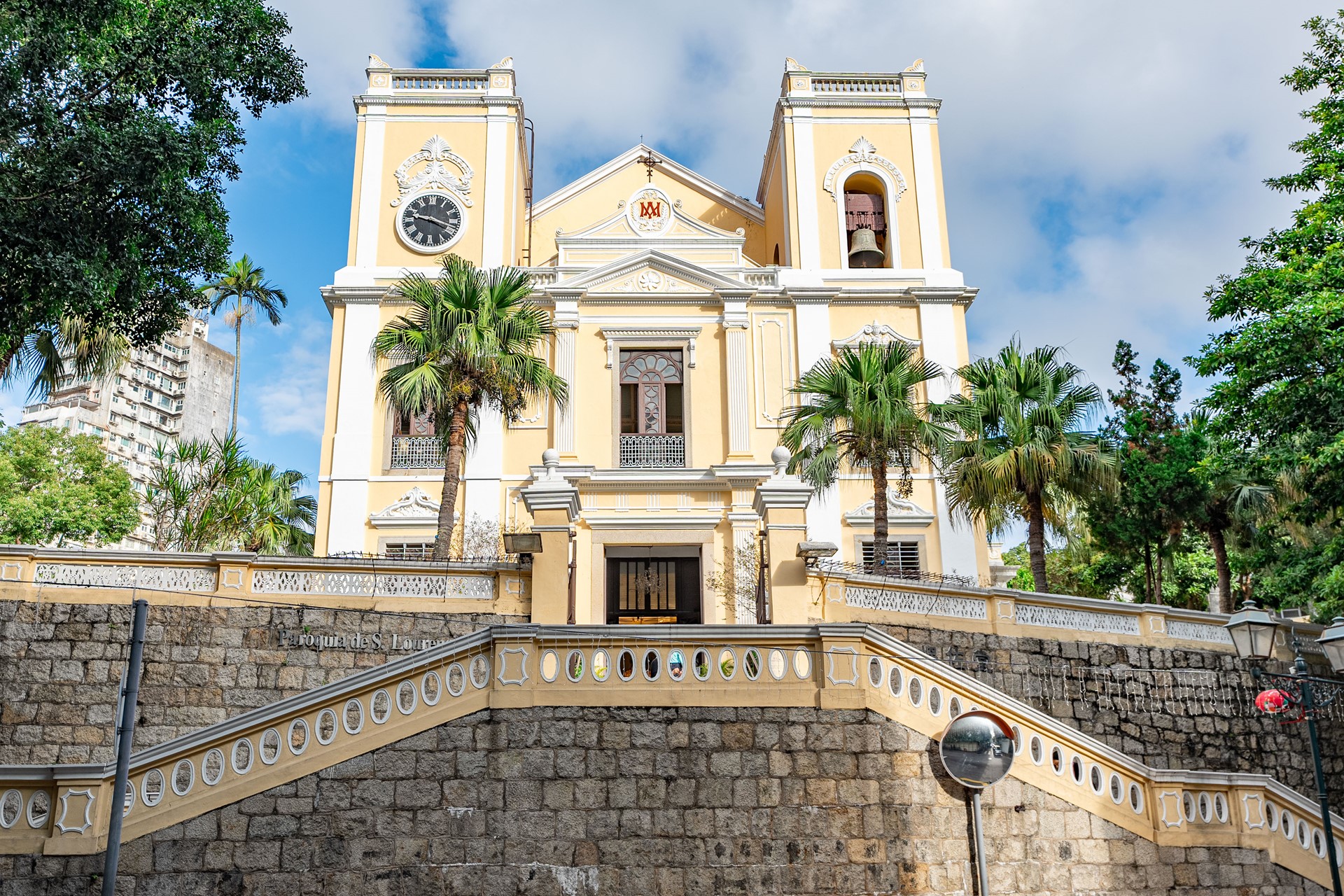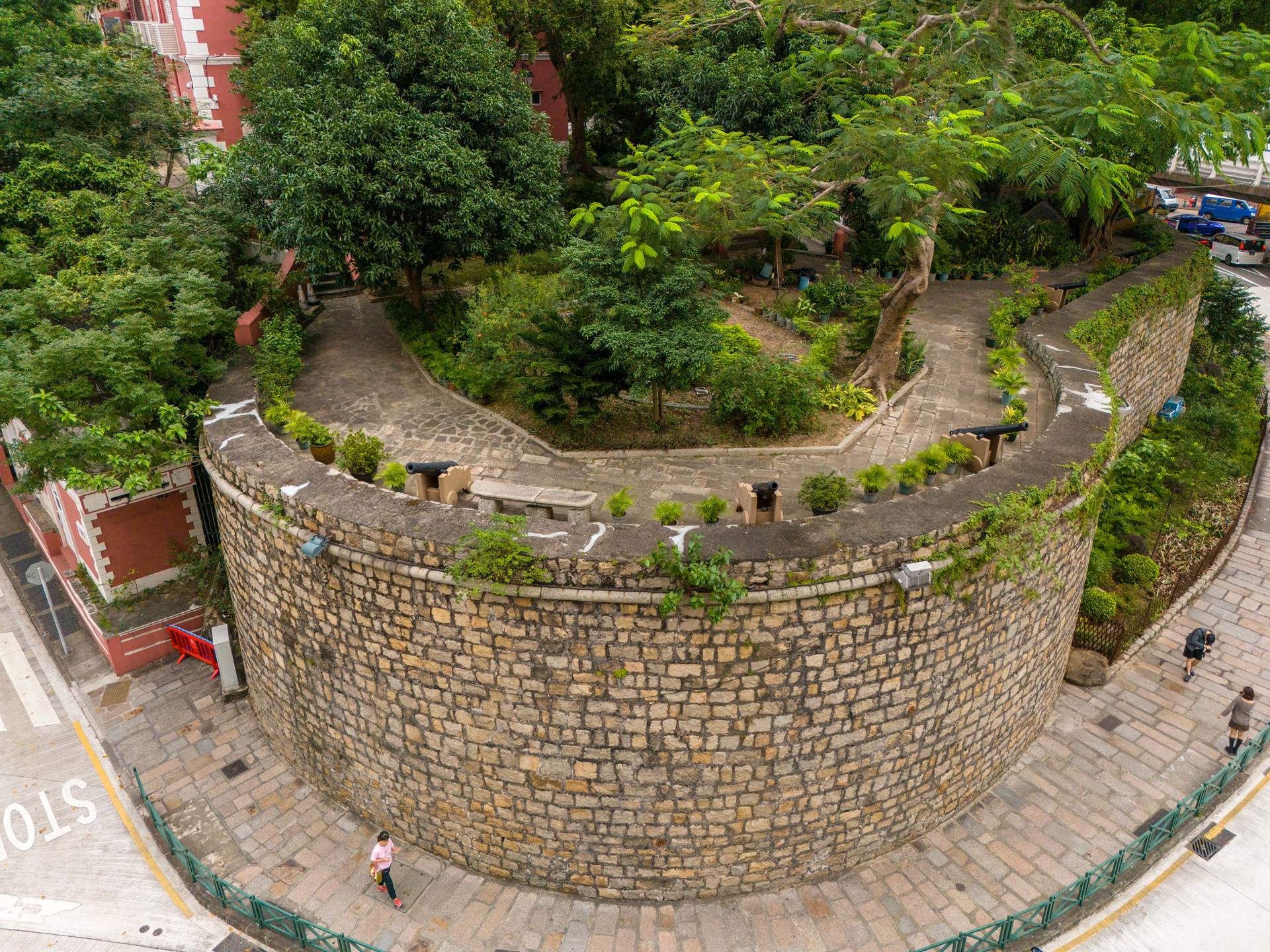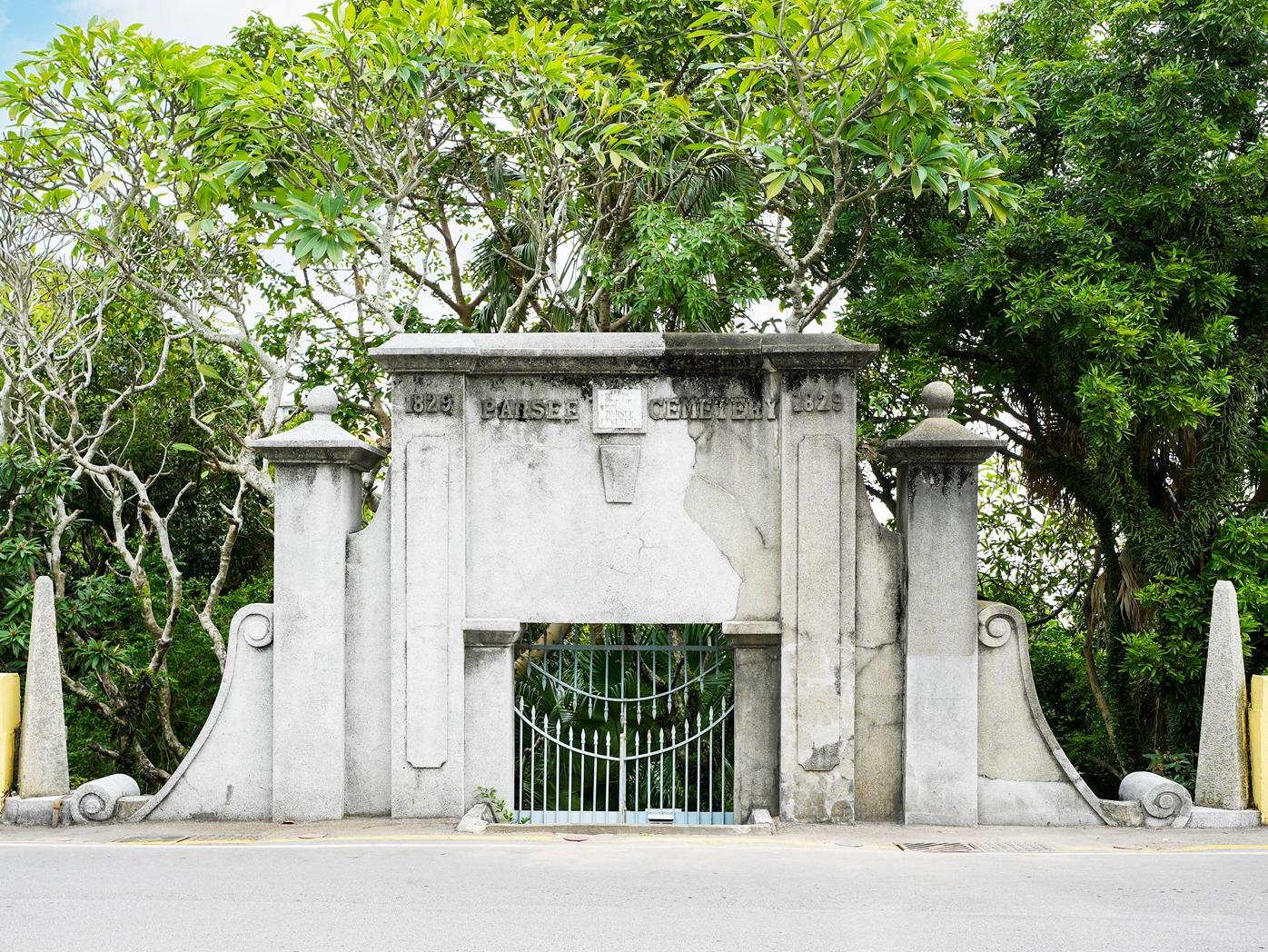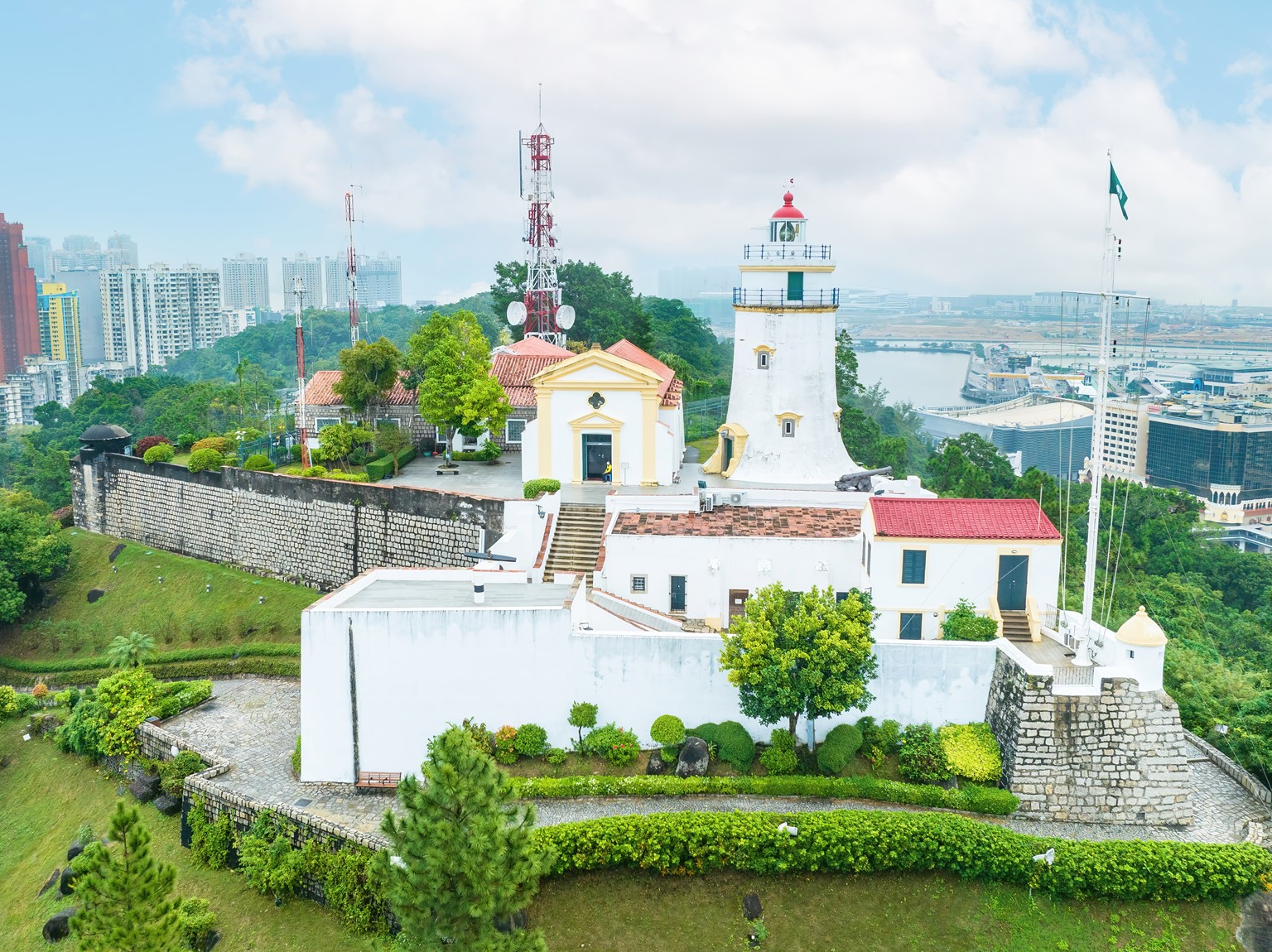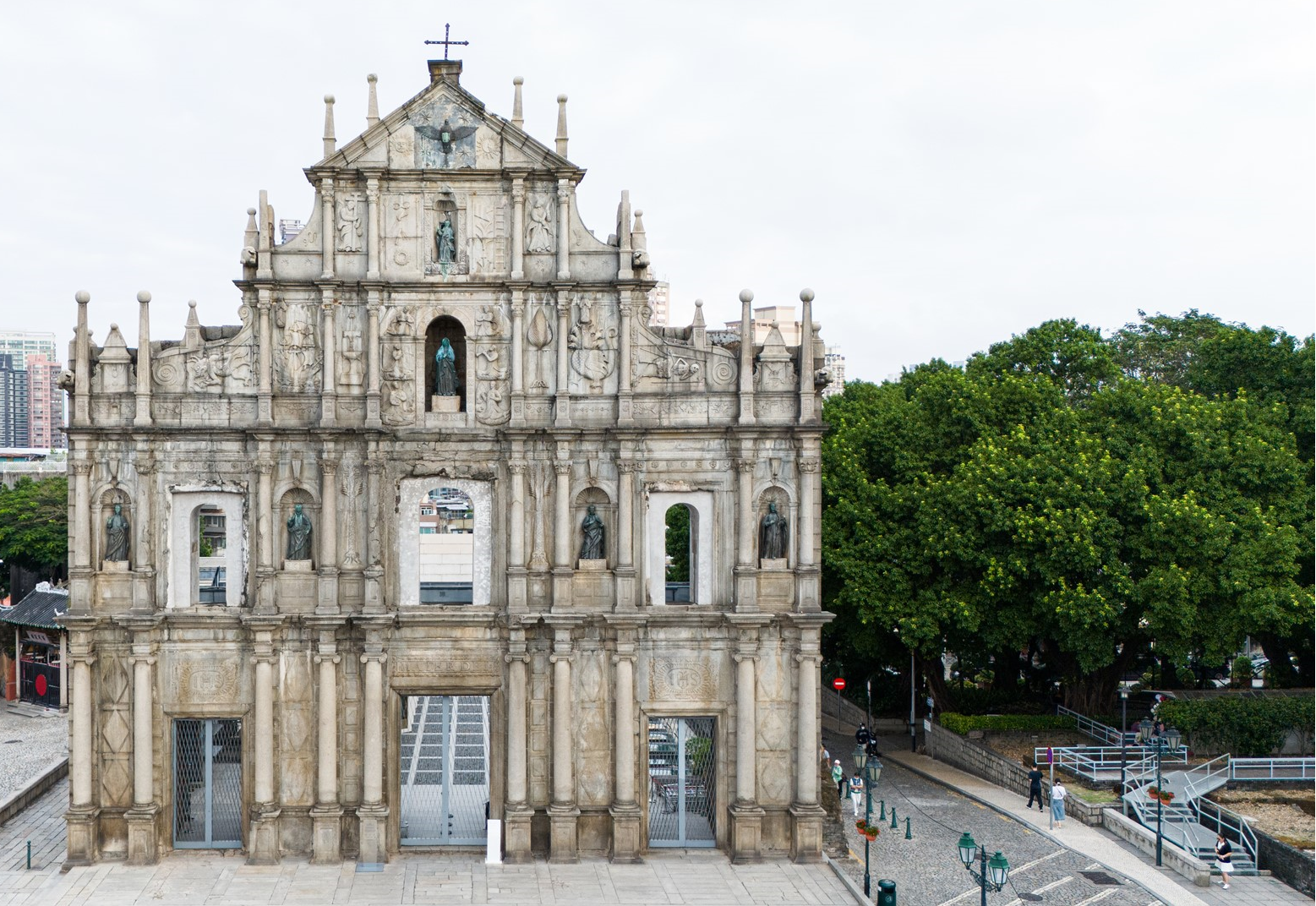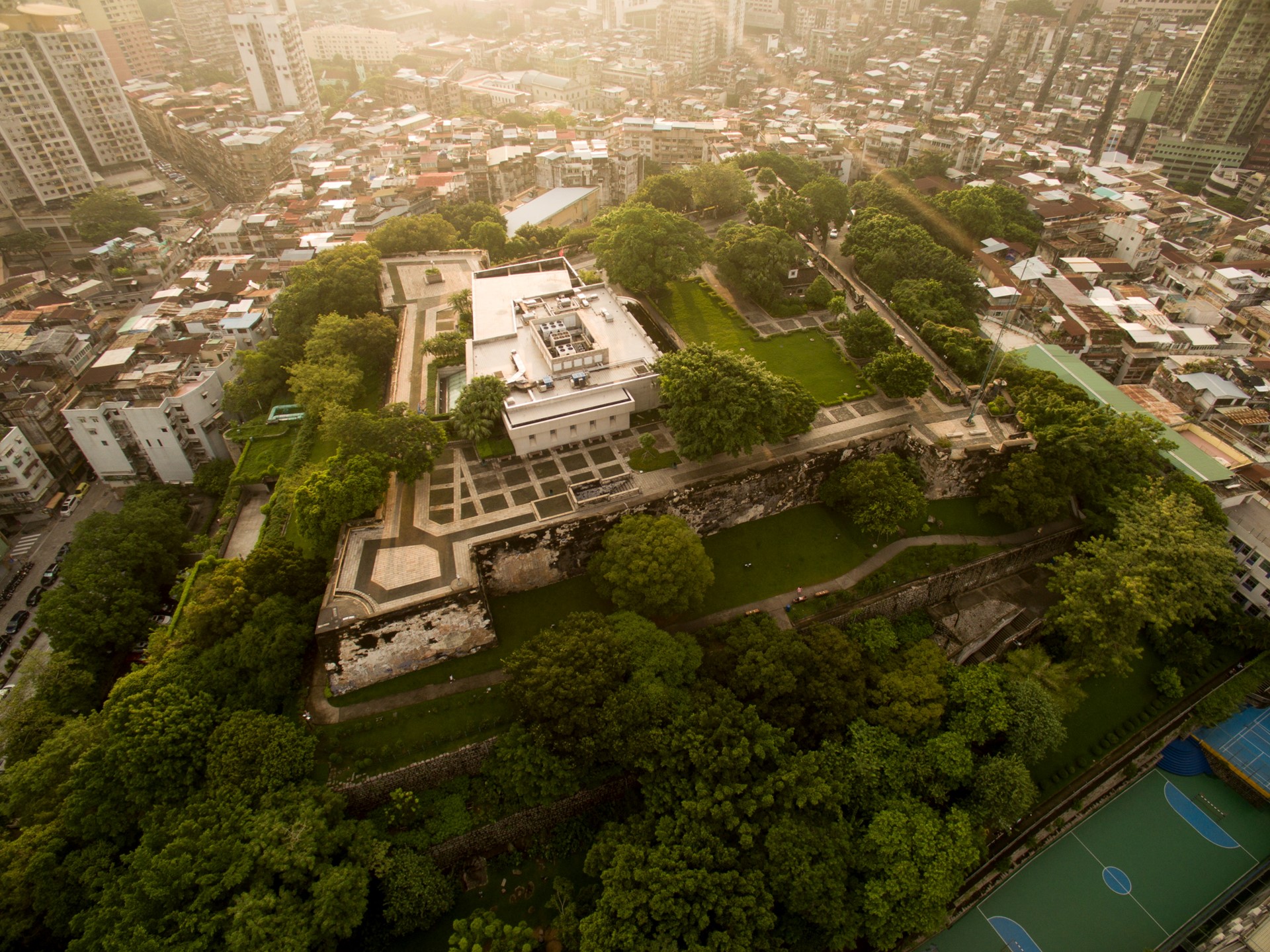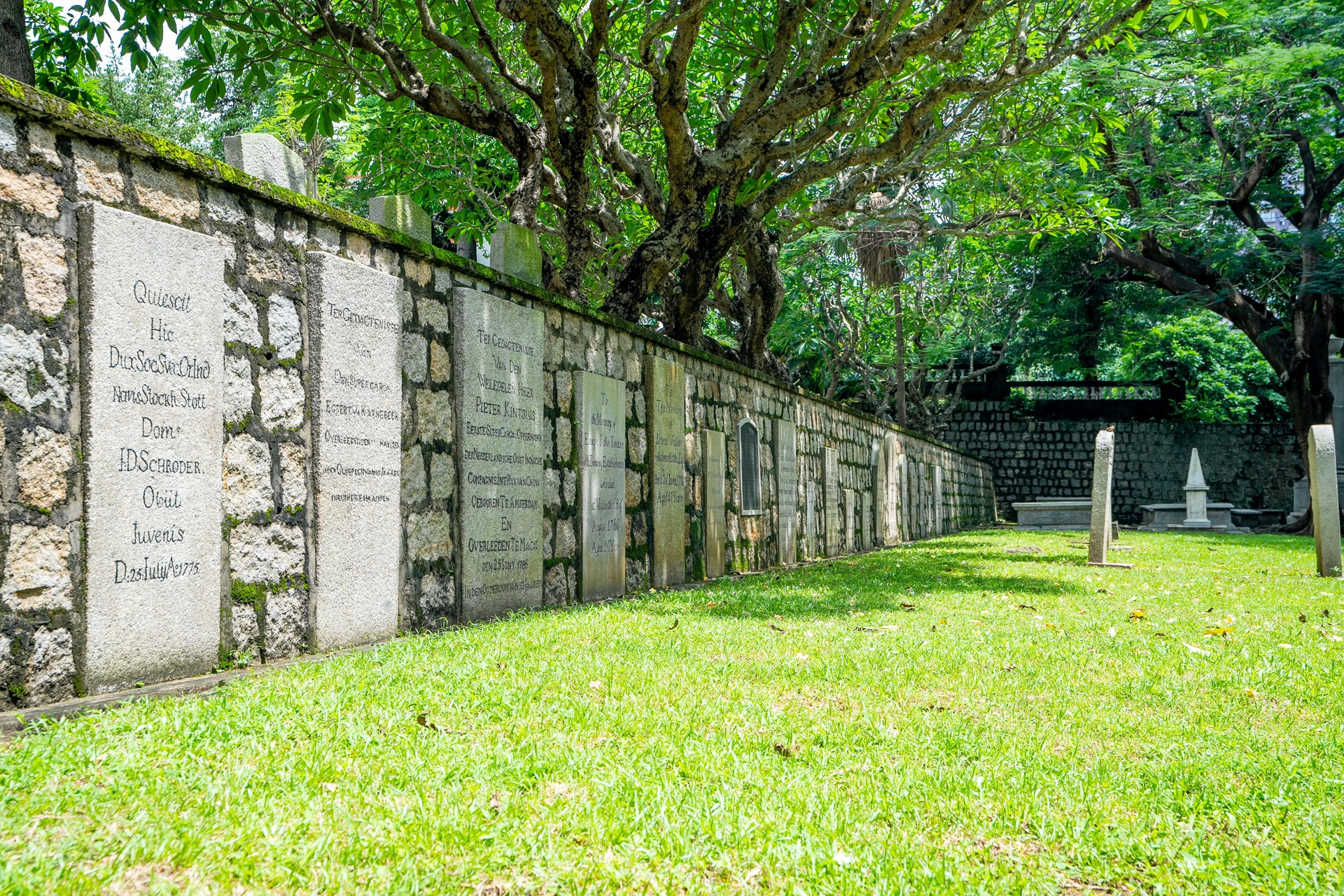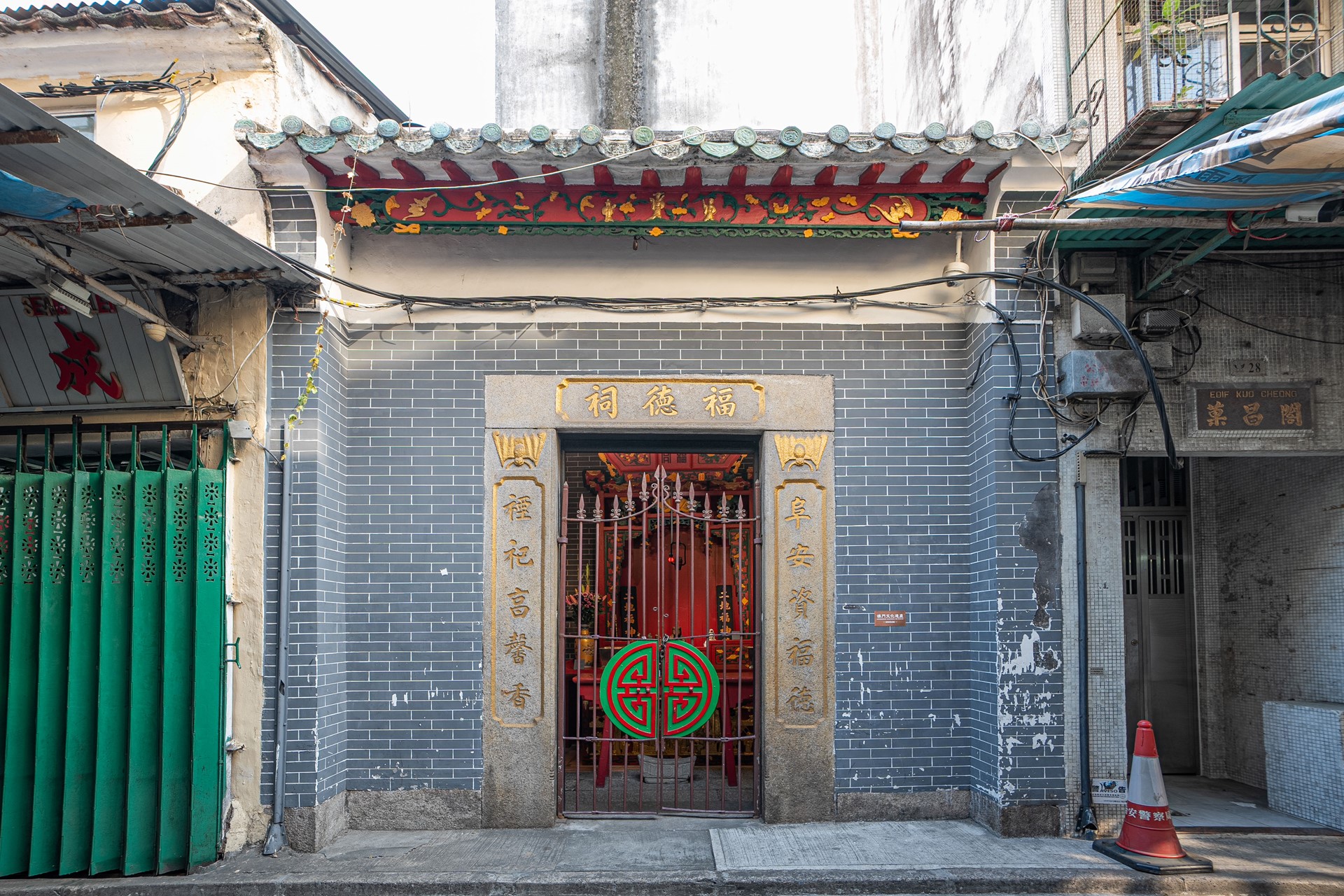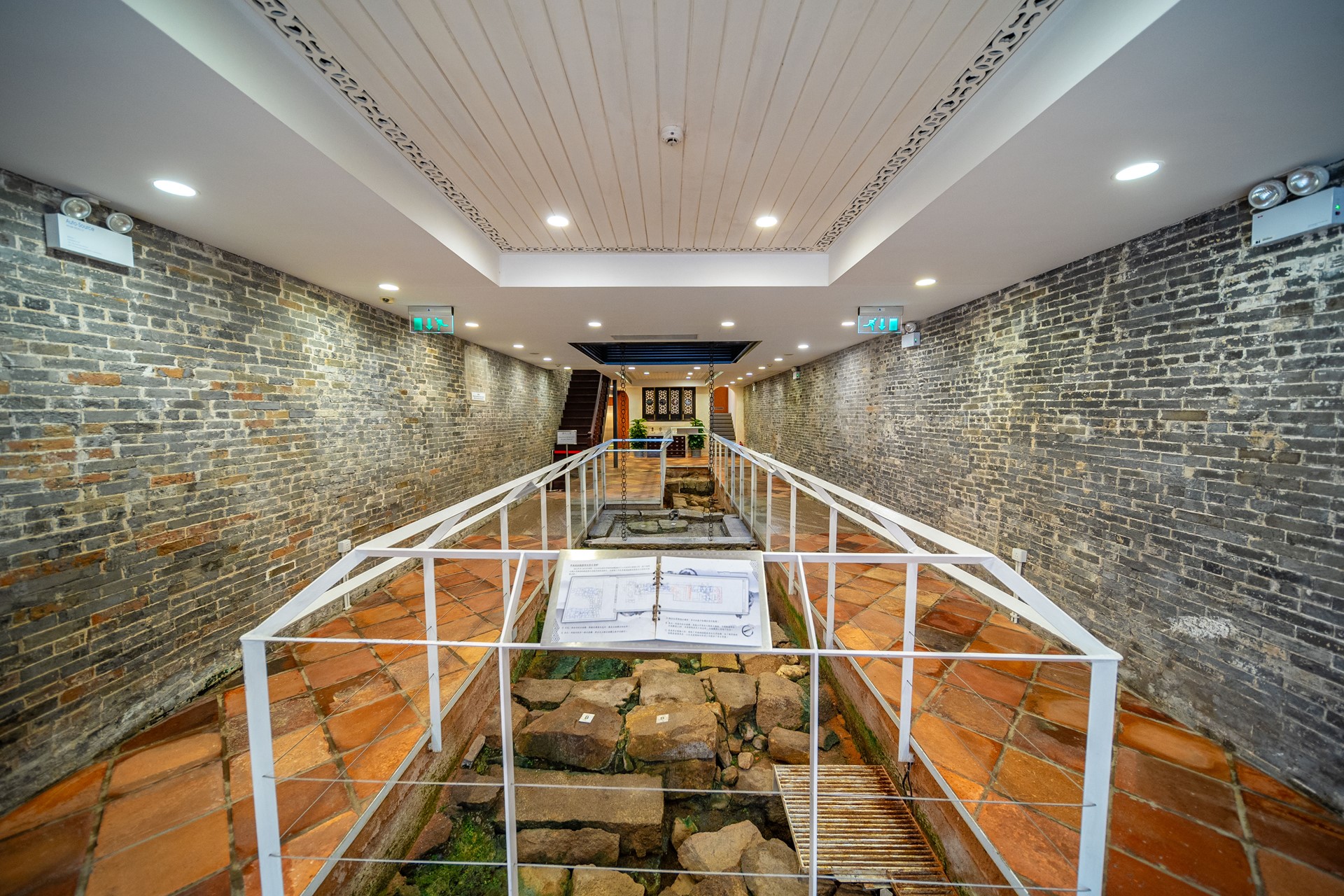A-Ma Temple, also known as Barra Temple, is one of the three oldest temples in Macao. It is located on the southwestern tip of the Macao Peninsula, built against a cliffside of Barra Hill facing the sea. In the past, boats could be moored right in front of the temple. Originally built in the mid-Ming dynasty, A-Ma Temple underwent additional constructions and renovations over the centuries, until acquiring its present scale and style in the late Qing period. There are stone flagpoles in front of the temple. The overall architecture of A-Ma Temple blends with the natural landscape of Barra Hill, embodying the characteristics of Chinese religious architecture in harmony with nature.
Mazu (aka A-Ma) is one of the most widely worshipped deities in local traditional Chinese beliefs. Originally known as Lin Moniang, Mazu was worshipped as a protector of seafarers. In the early Qing dynasty, she was recognised with the title of Heavenly Empress. The cult of Mazu spread alongside the maritime activities, and the goddess was also designated as A-Ma. During the Ming dynasty, Macao was known as the “Bay of A-Ma”, suggesting that the belief and customs of A-Ma had already spread to the area. In the mid-16th century, the Portuguese landed in Macao near A-Ma Temple, and it’s believed that the Portuguese name of the city, “Macau”, is related to the cult of A-Ma. A-Ma Temple is in fact the oldest local temple, as attested by physical evidence found at the site, thereby bearing witness to the religious activities of the Chinese people involved in sea trade along the Maritime Silk Road since the earliest stages, while also being one of Macao’s most iconic and significant landmarks.
Nowadays, there are still two stones with carvings of ships in A-Ma Temple. According to legend, during the Wanli period of the Ming Dynasty, a Fujian merchant ship was caught in a hurricane on the sea near A-Ma Temple and, in the face of such danger, A-Ma suddenly descended, standing by the mountain, and calmed the wind and waves. The ship survived the disaster and to thank A-Ma, the merchants set up a temple to worship her and had a ship carved on the stone, with the inscription “Li She Da Chuan” (Smooth sailing on the sea) to praise the miracle of the deity. The stones illustrate the people’s wish to sail safely and overcome hindrances at sea and are a testimony to the early maritime activities in Macao. A-Ma Temple is also dotted with around 24 cliff stone carvings, most of which were inscribed by intellectuals and high-ranking officials during their visits in the Qing dynasty. These stone carvings describe Macao's landscape in southern China and its rich cultural life and are valuable historical records for the studies of Macao’s historical transformations in the mid-to-late Qing dynasty, also recording the friendly interactions of intellectuals from that period.
Every year on Mazu Celebration (Tin Hau Celebration), on the 23rd day of the 3rd lunar month, both Tanka fishermen and land residents spontaneously organise praying rituals, with activities that include honoring the gods and collecting donations. The square in front of A-Ma Temple is decorated with lanterns and ornaments, and there are rituals in honour of the gods, also with the installation of a provisional bamboo stage for the performance of traditional Chinese Operas for the Deities, hence designated “Water and Land Acting Performance”. Mazu culture has been rooted in Macao for centuries, with the Belief and Customs of Mazu ever present, the festival is an important, far-reaching folk celebration in Macao.
